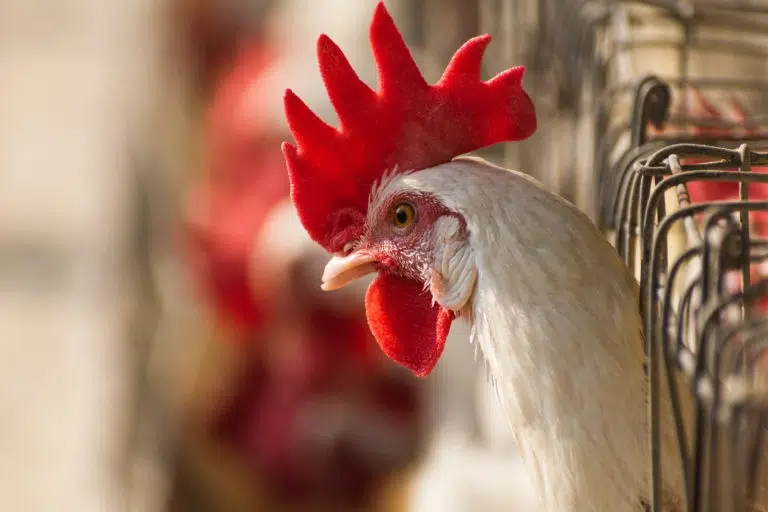In December 2015, the European Commission launched its action plan for transitioning to a circular economy. The intention was to boost the transition to a circular economy in which more resources are reused. This would not only reduce the environmental impact of products but also create new jobs and encourage a more sustainable economic growth model.
In this article we consider what is the circular bioeconomy, why is it so important to the agri-food sector and how is innovation in this space being funded?
What is a circular bioeconomy?
A circular economy is a model of production and consumption, which involves sharing, leasing, reusing, repairing, refurbishing, and recycling existing materials and products as long as possible (European Parliament, 2015). In essence it seeks to extend the life cycle of products and reduce waste to a minimum.
A circular bioeconomy combines these two ideas to create a framework for using renewable natural capital to transform and manage our land, food, health and industrial systems, with the goal of achieving sustainable wellbeing in harmony with nature (Tan et al, 2021). Economic growth is decoupled from the extraction of virgin resources and instead focuses on ‘growth within’ using existing stocks of products and materials.This idea relies on both circularity and the availability of biological resources, meaning limiting waste and maintaining biodiversity are key pillars of a circular bioeconomy.
The European Commission (2012) defined a bioeconomy as:
“Production of renewable biological resources and the conversion of these resources and waste streams into value added products, such as food, feed, bio-based products and bioenergy.”
How the EU intends to implement a circular economy
The EU’s bioeconomy strategy (2018) paves the EUs pathway to transition away from fossil fuels to using more renewable biological resources from land and sea. Five key goals of this strategy are to:
- Ensure food and nutrition security;
- Manage natural resources sustainably;
- Reduce dependence on non-renewable, unsustainable resources;
- Limit and adapt to climate change;
- Strengthen European competitiveness and create jobs.
Many of these products and materials are derived from or have enormous potential to contribute to the development of sustainable agriculture. This drive for a circular bioeconomy has led to key legislative changes affecting the agri-food chain which aim to recycle organic waste including processed animal proteins and food waste back into agricultural and feed and food supply chains or to produce other economically useful materials.
The potential of bio-waste
Biomass, which is derived from plant and animal materials, including organic waste, has significant potential to enable a bio-based economy.
It is estimated that 138 million tonnes of bio-waste is generated annually in the EU, from which 40% goes to landfills (Horizon 2020). Additionally, the EUs new Circular Economy Action Plan notes that raw material extraction and material processing are responsible for 90% of biodiversity loss and water stress (CEAP 2020).
Given this large share of bio-waste and its high potential to be used as a source of sustainable raw material for industrial processes and for creating added value in the economy, Horizon Europe, EU’s latest research and innovation framework programme for 2021 to 2027 has a specific focus on research and innovation projects targeting the bio-based sectors.
Within the programme, there are a number of key projects: Food, Bioeconomy, Natural Resources, Agriculture and Environment.
The goals of these projects are to advance knowledge, expand capacities, and deliver innovative solutions to accelerate the transition toward the sustainable management of natural resources. These projects are expected to facilitate the development and adoption of bio-based solutions including new bio-based plastic alternatives, sustainable business models and sustainable bio-refineries.
Project Unlock – rethinking poultry waste
Project UNLOCK is an example of an EU project launched to strengthen and expand opportunities within the bio sector industries.
The European poultry sector generates 3.6 million tonnes of waste feathers each year, of which only around 25% are collected separately and valorised. Project UNLOCK proposes to make use of this valuable resource and create a new economically and environmentally sustainable value chain for a feather-based bioeconomy by generating innovative bio-based functional materials for agricultural applications (e.g., forest/seed trays, nonwoven geotextiles, mulch films and hydroponic foams.
Feathers contain 90% keratin, and the new innovative products have the additional advantage of biodegradability at the end of the product’s life. Keratin-based materials could outperform their fossil-based counterparts by providing additional functionalities during the product lifespan and environmental benefits at the end-of-life (controlled biodegradability, enrichment of organic – nitrogen to soil and zero waste generation).
Farrelly Mitchell are part of the Project Unlock programme, we believe that the role of circularity in food and agriculture is key to reducing food waste and improving the sustainability of the industry as a whole. Projects like Unlock provide a blueprint for commercially viable ways to increase the impact of the circular bioeconomy.
Insects’ role in the new circular economy
Insect farming is another prime example of an emerging sector that can contribute to all five goals with the bioeconomy strategy. Insects convert food waste into biomass that can be used directly as food or in animal feed, thus linking waste management to food production.
Insect protein is emerging as a potential substitute for using soybean-based protein in animal feed, and for direct human consumption and can help reduce the reliance on imported feeds and concerns over the environmental impact of increased soybean production leading to deforestation.
In 2021 the EU lifted a ban on the use of insect-derived feed for pigs and poultry which follows the approval of insect-derived proteins as aquaculture feed in 2017. However, despite this, food safety regulations still prevent the use of around 70% of available food waste in the EU as feedstock for insects.
How will the transition to a circular economy be funded?
One of the biggest obstacles to developing technologies for a circular bioeconomy is a lack of funding for start-ups to scale up their technology. The good news is that the EU is providing support through a range of grant and loan schemes.
In addition to the Horizon Europe research and innovation funding, the European Investment Bank (EIB) is supporting this transition by providing loans for up to 50% of the cost of projects in the agriculture, forestry and forest-based sector, blue economy and solid waste management sectors and value chains. Projects must be in line with the priorities of the EIB including the transition to a low-carbon and climate-resilient economy. Loans are awarded directly as minimum amounts of EUR 7.5 million for investment projects of a minimum of EUR 15 million or through intermediary banks for smaller amounts.
The Bioeconomy is also one of nine specific objectives of the future CAP 2021-2027 to “promote employment, growth, social inclusion and local development in rural areas, including bioeconomy and sustainable forestry”. Member States must have bioeconomy related funding in their CAP National Strategic Plans. In addition, the RDP (Rural Development Programme) can support projects to develop the bioeconomy.
The European Circular Bioeconomy Fund (ECBF) aims to catalyse the transition towards a sustainable future and has raised over EUR 300 million to date. In addition, a European green bond standard has been established to help develop and raise the environmental ambitions of the green bond market. The intention is to encourage ESG investors to support circular economy projects undertaken by European companies.
The future of the Bioeconomy
Long-term investment and involvement at all levels are needed to make the circular bioeconomy a reality. This means getting commitments from member states, regions and cities, the private sector as well as citizens. The increased funding along with changes in legislation will provide opportunities for firms within the Agri-food and AgTech sector to develop more innovative and sustainable solutions to Europe’s growing environmental and economic challenges.
Talk to us about future policies and projects
Our agribusiness consultants at Farrelly Mitchell work across the global agricultural industry giving us a unique birds-eye perspective on how different activities can have an impact on each other.
From government policy to agricultural techniques to consumer trends, we help our clients to find the linkages, relationships and unintended consequences that occur in the agricultural supply chain.
Our experts are adept at designing sustainable business models and innovative solutions that align with broader environmental and economic goals, such as the circular economy. By applying our deep industry knowledge and experience, we help governments and corporates around the world realise their sustainability objectives while also benefitting commercially.











